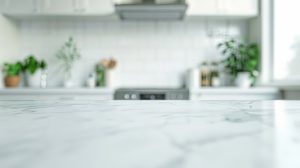
Giving You the Freedom to Live Safely in Your Home
Barrier-free living involves adapting your home to be fully accessible, eliminating obstacles that may cause injury or hinder you from enjoying your home and maintaining your independence as you age.
What Barrier-Free Living Looks Like
Barrier-free living means incorporating barrier-free design into your home. This approach involves removing or modifying elements that prevent you from using your home as intended. It can include technology enhancements, minor or major construction, and changes to interior design.
Examples of Barrier-Free Modifications:
-
- Smart Home Technology: Makes controlling electronics and home systems (heating, cooling) easier using your voice, smartphone, tablet, or computer.
- Brighter Lights: Improves visibility throughout the home.
Ramps: Provides wheelchair access into and out of the home. - Chair Lifts: Allows movement between home levels without using stairs.
- Lowered Work Areas and Light Switches: Brings counters and switches to an accessible level for those in wheelchairs.
- Railings: Sturdy railings along steps or stairs and in wet areas like bathrooms and laundry rooms reduce the risk of falling.
- Widened Hallways and Doors: Facilitates easier access throughout the house for wheelchair, walker, or cane users.
- Furniture Adjustments: Removing or rearranging furniture creates more space and makes items like lamps more reachable.
Benefits of a Barrier-Free Home
Safety is the primary reason for adapting your home to be barrier-free. According to the National Council on Aging, falls are the leading cause of fatal and non-fatal injuries for adults 50+. One in four Americans over 65 falls each year. Reducing barriers reduces this risk.
Living barrier-free allows you to stay in your current home and age in place. With the right modifications, you may not need to consider moving to senior housing or selling the home you've cherished for so long.
Universal Design
Universal design is an evolution of the barrier-free concept. Unlike barrier-free design, universal design constructs a home to be fully accessible for everyone from the outset, regardless of age, capabilities, or disabilities, with a focus on aesthetics. If modifying your current home isn't feasible, purchasing a home built with universal design is an excellent option.

